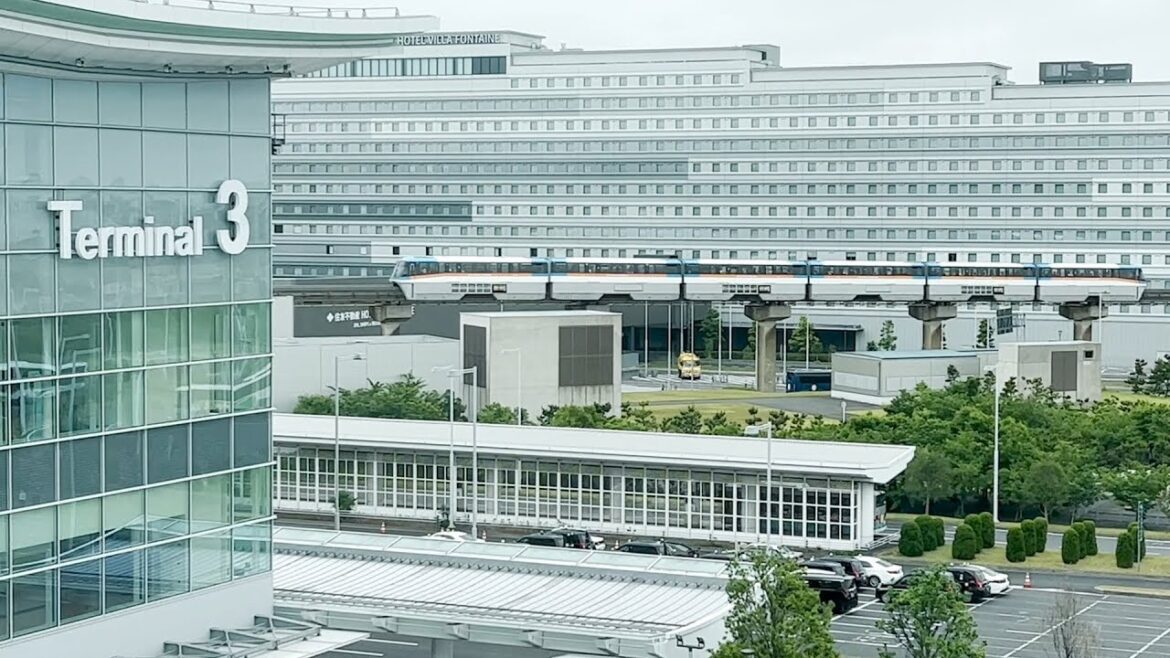The Tokyo Monorail (東京モノレール, Tōkyō Monorēru), officially the Tokyo Monorail Haneda Airport Line (東京モノレール羽田空港線, Tōkyō Monorēru Haneda Kūkō sen), is a straddle-beam, Alweg-type monorail line in Tokyo, Japan. It is an airport rail link that connects Tokyo International Airport (Haneda) to Tokyo’s Ōta, Shinagawa, and Minato wards. The 17.8-kilometer (11.1 mi) line serves 11 stations between the Monorail Hamamatsuchō and Haneda Airport Terminal 2 stations. It runs on a predominantly elevated north–south route that follows the western coast of Tokyo Bay. The monorail is operated by the Tokyo Monorail Co., Ltd., which is jointly owned by JR East, the system’s rolling stock supplier Hitachi, and ANA Holdings, Inc. (the holding company of All Nippon Airways). It carried an average of 140,173 passengers per day in 2018.
Plans to build Japan’s first airport rail link surfaced in 1959 as Tokyo was preparing to host the 1964 Summer Olympics. That year, the Yamato Kanko Co., Ltd.—later renamed the Tokyo Monorail Co.—was established to build the rail connection. Construction began in 1963 and completed on September 17, 1964, just 23 days ahead of the Olympic opening ceremony. Upon opening, the monorail operated between the Hamamatsuchō and Haneda stations, making no intermediate stops. It has since been expanded with infill stations and extensions, and there are plans to extend it to Tokyo Station in the future.
The Tokyo Monorail is one of two rail lines serving the airport, the other being the Keikyū Airport Line. At Hamamatsuchō Station, passengers may transfer to the Keihin–Tōhoku and Yamanote lines of JR East, as well as the Asakusa and Oedo lines of the Toei Subway via nearby Daimon Station. The monorail also connects with Tokyo Waterfront Area Rapid Transit’s Rinkai Line at Tennōzu Isle Station.
Tokyo International Airport (東京国際空港 Tōkyō Kokusai Kūkō), commonly known as Haneda Airport (羽田空港 Haneda Kūkō), Tokyo Haneda Airport, and Haneda International Airport (IATA: HND, ICAO: RJTT), is one of the two primary airports that serve the Greater Tokyo Area, and is the primary base of Japan’s two major domestic airlines, Japan Airlines (Terminal 1) and All Nippon Airways (Terminal 2), as well as Air Do, Skymark Airlines, Solaseed Air, and StarFlyer. It is located in Ōta, Tokyo, 14 kilometres (8.7 mi) south of Tokyo Station.
Haneda was the primary international airport serving Tokyo until 1978; from 1978 to 2010, Haneda handled almost all domestic flights to and from Tokyo as well as “scheduled charter” flights to a small number of major cities in East Asia, while Narita International Airport handled the vast majority of international flights. In 2010, a dedicated international terminal was opened at Haneda in conjunction with the completion of a fourth runway, allowing long-haul flights during night-time hours. Haneda opened up to long-haul service during the daytime in March 2014, with carriers offering nonstop service to 25 cities in 17 countries. The Japanese government is currently encouraging the use of Haneda for premium business routes and the use of Narita for leisure routes and by low-cost carriers.
Haneda handled 85,408,975 passengers in 2017; by passenger throughput, it was the third-busiest airport in Asia and the fourth-busiest in the world, after Hartsfield–Jackson Atlanta International Airport, Beijing Capital International Airport (Asia’s busiest), and Dubai International Airport. It is able to handle 90 million passengers per year following its expansion in 2010. With Haneda and Narita combined Tokyo has the third-busiest city airport system in the world, after London and New York City.

